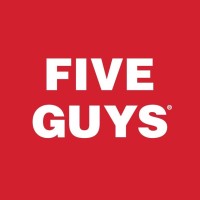
Five Guys Enterprises
History: *1986: The first Five Guys location opens in Arlington, VA. *1986 - 2001: Five Guys opens five locations around the DC metro-area and perfected their business of making burgers… and starts to build a cult-like following. * 2002: Five Guys decides DC metro-area residents shouldn't be the only ones to experience their burgers and start to franchise in Virginia and Maryland. * 2003: Five Guys sells out of franchise territory within 18 months and starts to open the rest of the country for franchise rights. * 2003 - 2012: Five Guys expands to over 1,000 locations in the U.S. and Canada. * In July 2013, Five Guys opens the first location outside of North America in London, England. * Our International HQ in Amsterdam, NL opened in 2016. * Today, we have more than 1,900 locations open in North America, Canada, UK, Middle East, Europe, APAC and growing.






